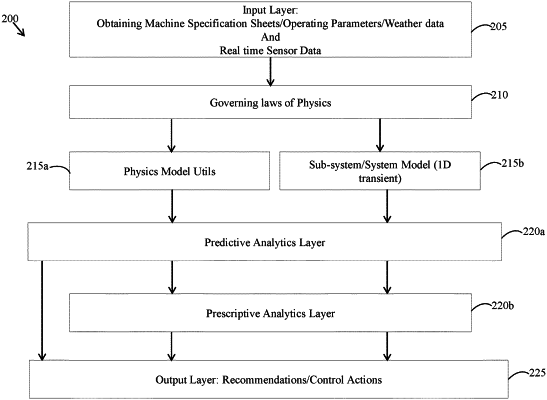| CPC G06F 30/27 (2020.01) [G06N 20/00 (2019.01); G09B 23/06 (2013.01)] | 16 Claims |

|
1. A method for optimizing an enterprise application, the method comprising:
configuring a data-based model using historical field data of an enterprise, wherein the data-based model includes a plurality of layers including a first laver, a second layer, a third layer, a fourth layer, and a fifth layer;
configuring a physics-based model using simulated data of the enterprise, wherein the physics-based model includes a plurality of layers including a first layer a second layer a third layer, a fourth layer, and a fifth layer;
validating data obtained through the data-based model by:
identifying a sub-component of the enterprise application;
extracting features of the sub-component through the physics-based model;
obtaining data from virtual sensors through the physics-based model; and
training the data-based model using the data obtained from field sensors;
providing real-time feedback to the physics-based model based on field observations through the data-based model, to calibrate the physics-based model in real time and therefore making the model more accurate, wherein the data-based model feedback to the physics-based model from the real-field observations works in a cyclic manner and enables to achieve a balance between bias i.e., the data-based model and variance i.e., the physics-based model; and
predicting a consistent control action based on the data generated through the data-based model and accepted by the physics-based model, wherein a final check is implemented to ensure the predicted control action is consistent and interpretable, wherein the physics-based model receives the predicted control action from the data-based model, which enables acceptance of recommendations and the predicted control actions at a client setting, for speedy decision making, which directly determines potential benefits.
|